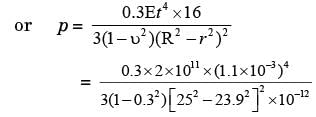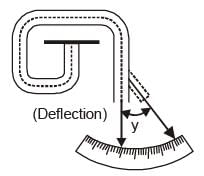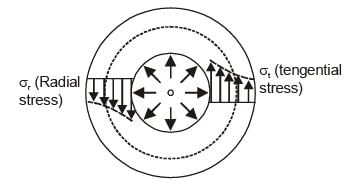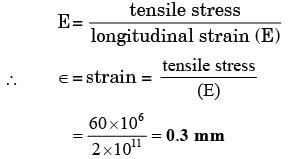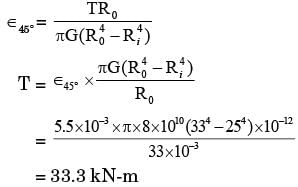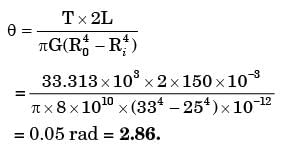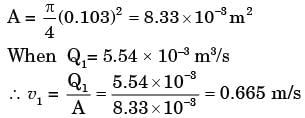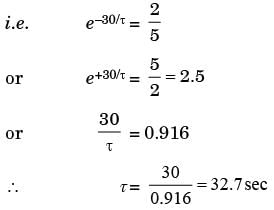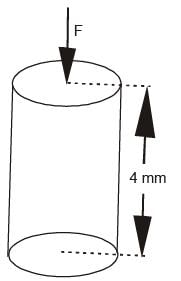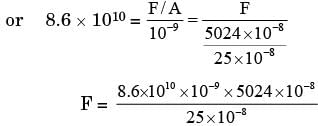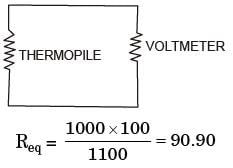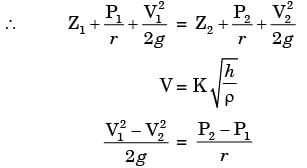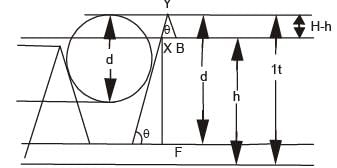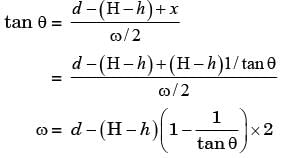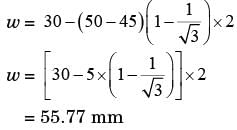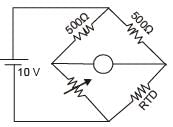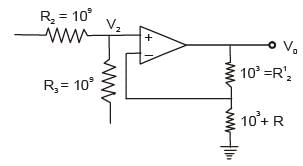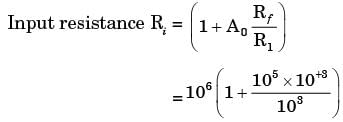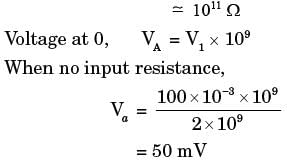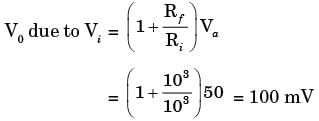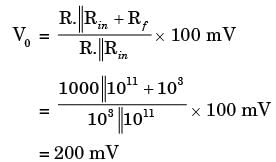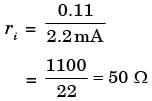Test: Sensor & Industrial Instrumentation- 4 - Electronics and Communication Engineering (ECE) MCQ
25 Questions MCQ Test Sensor & Industrial Instrumentation - Test: Sensor & Industrial Instrumentation- 4
The probability that a thermistor randomly picked up from a production unit is defective is 0.1. The probability that out of 10 thermistors randomly picked up, 3 are defective is (2015)
Transconductance characteristics depend on (2014)
A psychrometric chart is used to determine (2012)
The conventional way of expressing vibration is in terms of (2011)
For the op-amp shown in the figure the bias currents are Ib1 = 450nA and Ib2 = 350nA. The values of the input bias current (IB) and the input offset current (If) are: (2014)
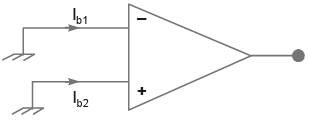
A sound intensity level of 60 dB corresponds to (2001)
A thrust-producing device is tested in a laboratory by measuring the deflection of a spring element (spring constant K = 750 N/m) attached to the front end of the device. The mass of the device is 25 kg. Assuming that the thrust is idealized as step input to the system. (2002)
(a) Calculate the natural frequency of the system
(b) Calculate the damped natural frequency of the system, if the damping ratio is 0.7
(c) Write the differential equation governing the measuring system
The diaphragm element of a pressure gauge is a circular foil of steel (Young’s modulus, E = 2 x 1011 N/m2, Poisson’s ratio, v = 0.3) which is firmly clamped around its circumference. The radius (R) and thickness (t) of the element are 25 mm and 1.1 mm respectively. On the application of uniform pressure (p), the deflection (y) at any radial position (r) measured from the center is given by the expression: (2002)

(a) Find the maximum design pressure if the allowable deflection of the element is limited to 0.3 times its thickness.
(b) Schematically show the variations of deflection, the radial and tangential stresses from the centerline to the edge of the diaphragm element.
An electrical resistance strain gauge of resistance 120Ω has a gauge factor of 2. It is bonded to a steel specimen (modulus of elasticity, E = 2 * 1011 N/m2) for measuring strain. Estimate: (2002)
(a) Strain induced in the specimen if tensile stress of 60 * 106 N/m2 is applied on the specimen.
(b) Change in the electrical resistance of the gauge due to the tensile stress as given in (a)
(c) Change in the electrical resistance of the gauge if there is an increase of temperature by 40°C.
Assume the following data:
Temperature coefficient of resistance of gauge is 20 * 10-6 per °C
Thermal coefficient of linear expansion of the gauge is 16 * 10-6 per °C.
Thermal coefficient of linear expansion of steel specimen is 12 * 10-6 per °C.
A hollow circular steel shaft (shear modulus G = 8 x 1010 N/m2) with outer and inner radii of 33 mm and 25 mm respectively, has a length of 150 mm. It is transmitting a torque of T N-m. The strain indicated by a strain gauge fixed on the outer periphery at an angle of 45° to the axis of the shaft is 5.5 microstrain (micrometer per meter). Estimate the value of T and the angular deflection of the shaft. (2002)
A calibrated orifice meter is used in a pipeline of 103 mm ID to calibrate the probe of a constant temperature hotwire anemometer (CTA). The orifice meter readings are recorded in mm of Hg and the CTA readings in volts. It is independently found that the average velocity in the pipeline is exactly equal to the velocity at its axis, the volume flow rate of the fluid (Q) can be measured from the orifice meter calibration equation: Q = 6.311 x 10-4√h where h is in mm of Hg and Q is in m3/s. The readings of the CTA are correlated in the form : (volt)2 = a + b (velocity)1/2. Determine the constants (a) and (b) in this equation if the voltage readings are 0.284 and 0.323 V respectively when the corresponding orifice meter readings are 77 and 154 mm Hg. (5) (2002)
During measurement of pressure by an elastic transducer, pressure is instantaneously changed in a stepwise manner from 5 bar to 30 bar. The transducer indicates a value of 20 bar after 30 secs. Assume that the transducer is a first-order instrument. (2001)
(a) Determine the time constant of the transducer.
(b) How much time will the transducer take to indicate the pressure within 5% of the final value?
(c) On what factors does the time constant of the elastic transducer depend?
A piezoelectric transducer having diameter = 8 mm, thickness = 4 mm, charge sensitivity = 2 x 10-12 C/N, dielectric constant = 4 x 10-11 F/m and modulus of elasticity = 8.6 x 1010 N/m2 is used for the measurement of small displacement. For an input displacement of 109 m, determine
(a) the force to which it is subjected,
(b) the capacitance of the transducer,
(c) the charge generated,
(d) the voltage developed
A thermopile having a resitance of 100 Q and consisting of 20 copper-constantan thermocouples is used to measure temperature difference between two points. The temperature of the first point measured separately is 25°C. EMF generated measured by a voltage measuring device having an internal resistance of 1000 Q is 1.47 mV. E MF-temperature relationship for copper-constantan thermocouple with reference junction at 0° is as follows. (2001)
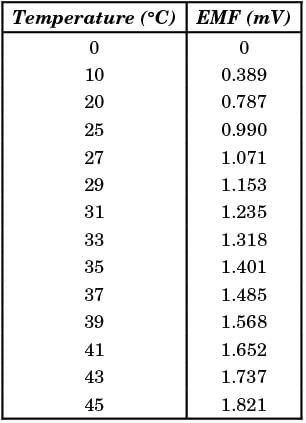
Determine the temperature difference between the two points after applying a correction for loading effect in the measurement of the EMF.
A certain pressure transducer measures the stagnation pressure (the total pressure). The density of the fluid is 1.03 g/cm3 and the velocity of flow is 100 cm/s. (2001)
(a) Calculate the dynamic pressure (pressure due to the velocity of flow) in N/m2.
(b) If the total pressure measured by the transducer is 10000 N/m2, find the static pressure in mm of Hg.
The width of a V-groove shown in Figure is determined using a standard steel ball of diameter d and a vernier height gauge. (2001)
(a) If the angle of the groove is A, derive an expression for the width w of the V-groove.
(b) Given: d = 30 mm, H = 50 mm, h = 45 mm and a = 60°, calculate w.

An RTD has a resistance of 500Ω at 20°C and a temperature co-efficient of 0.005/°C at 0°C. The RTD is used in a Wheatstone bridge circuit with R1 = R2 = 500Ω. The variable resistor R3 nulls the bridge. If the bridge supply is 10 V and the RTD is in a both of 0°C, find the values of R3 to null the bridge when (2000)
(a) No self-heating of RTD is considered
(b) Self-heating of RTD is considered and the dissipation constant of the RTD is 20 mW/°C.
Two identical strain gauges of resistance 120Ω and gauge factor + 2.0 each are attached to a steel block of Poisson’s ratio V = 0.3 as shown in Figure. Find the unbalance voltage per unit microstrain applied to the steel block as shown. (2000)
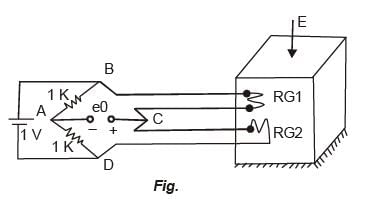
A pH electrode is connected through a shielded cable to a non-inverting amplifier as shown in Figure. The resistance of the electrode is 109Ω and the leakage resistance of the shielded cable is also 109Ω. Given that the input resistance of the non-inverting amplifier is, (2000)

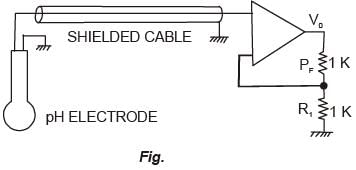
where A0 is the open-loop gain and R is the input resistance of the op-amp, find the output voltage v0 when a 100 mV signal is generated at the electrode. Assume R = 106Ω and A = 105 for i0 the op-amp used.
The e.m.f. developed by a photovoltaic cell can be taken as proportional to the logarithm of the intensity of radiation impinging on it. For 10 W/ m2 radiation, a cell develops an e.m.f. of 0.33 V and drives a current of 2.2 mA into a 100Ω load. Calculate: (2000)
(a) The open-circuit voltage at 25 W/m2.
(b) The internal resistance of the cell.
Kelvin double bridge is best suited for the measurement of (2002)
A seismic type of transducer has a damping constant of 10. The transducer is designed to measure (2002)
All metal resistive strain gauges have a gauge factor (GF) of nearly 2.5 due to the (2002)
A common practice of reducing hysteresis error in the output for a given value of the input is to maintain (2002)
A pitot-static tube is used for measuring the velocity of the gas, flowing in a duct. The velocity is proportional to
|
22 videos|28 docs|29 tests
|













